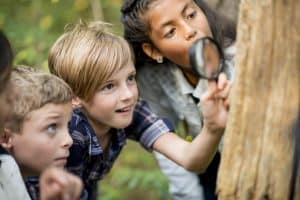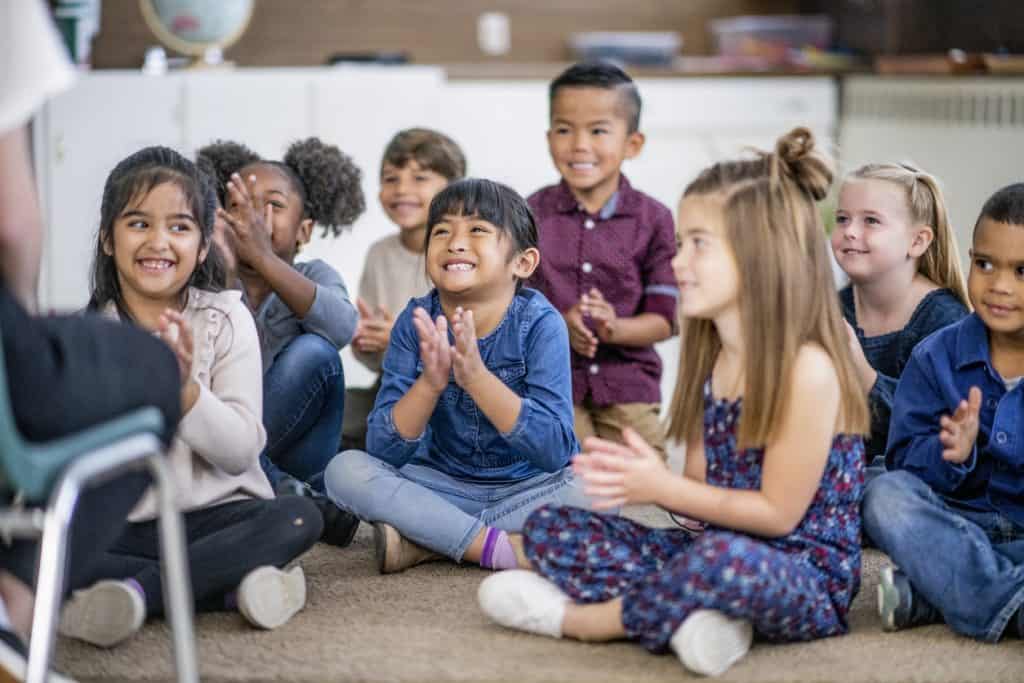Earth Day is a wonderful opportunity to introduce important concepts about the world—such as recycling, weather, earth elements, and how our planet works—to young learners in your classroom. Here are a few ideas and fun activities for learning about and celebrating Earth Day with your students.
What is Earth Day and When is it Celebrated?
Earth Day is a holiday that celebrates the importance of protecting our planet from things like pollution and deforestation. Earth Day is observed every year on April 22 because it marks the anniversary of the modern environmental movement.
10 Fun Facts About Earth Day
We’ve put together a list of interesting facts about Earth Day that is sure to inspire the students in your classroom:
- Earth Day started in 1970.
- It was created by Senator Gaylord Nelson of Wisconsin after he witnessed the effects of the Santa Barbara oil spill on the environment.
- Earth Day started in the United States, where over 20 million people got involved in pitching in to help clean up our environment.
- Earth day is recognized as the largest event on the planet.
- Earth Day is a world-wide celebration that happens every year on April 22.
- Over 3.5 billion people participate in Earth Day each year!
- In the US, 95% of schools help their students celebrate Earth Day.
- Schools can be awarded the Green Ribbon on Earth Day for reducing their environmental impact. Learn how your school can qualify to be a Green Ribbon school.
- Earth Day helped create the Environmental Protection Agency, which helps pass Earth-friendly laws.
- Earth day is a chance for everyone to learn how to reduce, reuse, and recycle!
Earth Day Activities for Students in Your Classroom
The Waterford.org curriculum team has created resources with fun ways to celebrate Earth Day in the classroom and beyond:
Our Earth: Use this coloring page in the classroom while you talk about the amazing Earth on Earth Day! You might choose to share facts like these: The Earth is the third planet from the sun and is the only planet in our solar system known to sustain life. About 71% of the Earth’s surface is covered in ocean waters. Scientists estimate the Earth to be 4.5 billion years old. The Earth rotates on its axis while traveling around the Sun. This creates day and night, as well as different seasons.
Pollution: Pollution is a worldwide problem, which occurs when waste enters the environment. All types of pollution, whether its land, water, air, noise, or light pollution, can negatively affect life on Earth. To help your students understand what pollution is, read the book Eight at the Lake. For ideas about how to help keep the Earth clean, watch the video “Pollution Rap” An Environmental Song with your class.
 Earth’s Ecosystems: Types of ecosystems on Earth include deserts, mountains, and rainforests—places where plants and animals work together and rely on each other to survive. An ecosystem can even be human made, like a vegetable garden, for example. A garden is a collection of plants, pollinators, and wildlife that work together to survive and thrive. To explore ecosystems with your students, read the book Where in the World Would You Go Today together! And use this guide to help your students build their own desert diorama, create a rainforest terrarium, and more.
Earth’s Ecosystems: Types of ecosystems on Earth include deserts, mountains, and rainforests—places where plants and animals work together and rely on each other to survive. An ecosystem can even be human made, like a vegetable garden, for example. A garden is a collection of plants, pollinators, and wildlife that work together to survive and thrive. To explore ecosystems with your students, read the book Where in the World Would You Go Today together! And use this guide to help your students build their own desert diorama, create a rainforest terrarium, and more.
Recycling: Recycling is an important part of keeping our planet clean. The recycling process turns used materials into new products and helps cut down the amount of waste that humans produce. It prevents waste from going into oceans and protects forests by reducing carbon emissions. Teach your students about the importance of recycling then try this experiment to measure the impact recycling can have on the Earth, in the home, and in the classroom.
Bugs: Insects play a big part in the natural recycling process by cleaning up dead leaves, branches, and other decaying materials found outside. Bugs also play a big role in helping to keep plants alive. Many bees and other insects drink nectar from flowers. As they eat, their bodies get covered in pollen. They carry the pollen and spread it around so that new plants will grow. Watch “Get Over the Bugs” with your students and try this experiment to discuss insects and the types of food they like to eat.
Plants: Plants are important to the planet because they absorb carbon dioxide from the air and convert it into oxygen, which we need in order to breathe. Plants also provide food and habitats for wildlife. Read the book A Seed Grows with your students and teach them about plants using this guide.
Weather: The weather plays a huge role in signaling our planet’s health. When the planet is healthy, the weather patterns are about the same every year, so studying the weather and noticing change helps us see if there are problems. One way to learn about tracking the weather is to notice what the weather is like every Earth Day. This way, students can see how different or similar it is next year on the same day. Read the book Whatever the Weather to your students and study the weather around us with these activities.
By implementing these ideas in your classroom, you can celebrate Earth Day in a fun and impactful way with your students. Reducing, reusing, and recycling are just three simple ways to help protect our planet. Teach your students about these three, and also the many other ways we can take care of the Earth for the future.
Other Resources:
- NASA Climate Kids: Home. https://climatekids.nasa.gov/.
- “Home Education Resource Library.” n.d. Earth Day. https://www.earthday.org/education-resource-library/#lessonplans.
- “The Planet Protectors: Activities for Kids | US EPA.” 2021. US Environmental Protection Agency. https://www.epa.gov/students/planet-protectors-activities-kids.
- Vinh, Megan. 2019. Early Education Inclusion in STEM Can Lay Groundwork for Future | Office of Special Education and Rehabilitative Services Blog. https://sites.ed.gov/osers/2019/05/early-education-inclusion-in-stem-can-lay-groundwork-for-future/.
- “Consumers, Plastic, and What It Means to be “Biodegradable.”” Georgetown Environmental Law Review. https://www.law.georgetown.edu/environmental-law-review/wp-content/uploads/sites/18/2019/05/GT-GELR190019.pdf.
- Meyer, John R. 2016. “ENT 425 | General Entomology | Resource Library (Tutorials).” North Carolina State University. https://projects.ncsu.edu/cals/course/ent425/library/tutorials/ecology/decomposers.html.
- Lutz, Ota. 2019. “NASA’s Eyes on Extreme Weather – Teachable Moments | NASA/JPL Edu.” Jet Propulsion Laboratory. https://www.jpl.nasa.gov/edu/news/2019/10/18/nasas-eyes-on-extreme-weather/.
- Davis, Matt, and Suzie Boss. n.d. “Earth Day: Lesson Plans, Reading Lists, and Classroom Ideas.” Edutopia. https://www.edutopia.org/blog/earth-day-lesson-plans-matt-davis.
- “Earth Day Resources for Teachers and Students.” 2018. Kids Discover. https://kidsdiscover.com/teacherresources/earth-day-resources-for-teachers-and-students/.
- Marris, Emma. 2020. “Why we’ll succeed in saving the planet from climate change.” National Geographic. https://www.nationalgeographic.com/magazine/article/why-we-will-succeed-in-saving-the-planet-from-climate-change-feature.

